Tiguan Grows Longer, Adds Third Seat Option
Filed under: Weekly test drives, Autos
By John Gilbert
As an SUV-buying society, we haven’t properly appreciated the Volkswagen Tiguan all through its existence. Now that it’s 2019, it’s still not too late, but the boundaries have changed.
For years, the Tiguan, Volkswagen’s compact crossover, was the company’s SUV, even when it wasn’t so much an SUV as a tall station wagon. It was always convenient for hauling a family and gear on trips, across the country or to the mall, or to hockey, soccer, baseball or basketball practice. It was solid, substantial, and performed well for both power, agility and gas mileage.
When the SUV craze not only hit but escalated rapidly out of control, companies that built cars soon realized that if they didn’t also build SUVs, they might soon be marketed right out of existence. I recall when Porsche built its first Cayenne, those of us in the invited automotive media assembled to drive the vehicles on and off a race track and off-road. The question on everybody’s mind finally got asked.
“Why would Porsche, a company that builds the best sports cars on the planet, bother building an SUV?”
The Porsche executive answered without hesitation: “So that we can continue to build the best sports cars on the planet.”
Those words ring true for every manufacture now, and not just because Porsche comes under the Volkswagen corporate umbrella. The other reason is that Porsche buyers also wanted SUVs, and they wanted high-end SUVs and were willing to pay a lot of money for them. The Cayenne gave Porsche buyer/owner types the chance to buy an SUV and stay within the Porsche family.
For Volkswagen itself, Beetles, Golfs, Jettas and Passats remained as good cars, great cars, maybe, but sales were shrinking as buyers were going elsewhere to find and buy SUVs. The SportWagen worked well enough, but more size was wanted, if not needed. So the Tiguan continued as an SUV, and Volkswagen added a couple larger SUVs, including the Atlas.
But a year ago, Volkswagen decided to lengthen the Tiguan. Buyers who liked it also wanted a third-row seat, and to meet the demand, or at least the request, VW lengthened the Tiguan and added a third row seat, which could fold down for added cargo space.
For 2018, Volkswagen sold two Tiguans, the remainder of the shorter model, and the highly promoted longer one. For 2019, the longer one is the only one still being produced. To meet all desires, VW makes the two versions different. Read more
Mustang Bullitt Blows Away All but Icy Driveway
Filed under: Weekly test drives, Autos

The 50th Anniversary Mustang Bullitt packs 480 horsepower, GT handling, special look, even in the face of impending storm.
By John Gilbert
When you review new cars, there’s never a good time to bid adieu to the really fun vehicles in which a week-long term goes by too fast. But when a mid-April, 8-inch snowfall hit Duluth, Minnesota, it’s probably best that my week-long test drive of a 2019 Mustang Bullitt ended prematurely.
Actually, I ended it three days before it would be picked up at my house, even though my term ended on the very day that the 50th anniversary of the movie “Bullitt” was released — the movie with the legendary chase scene that ultimately made Steve McQueen a superstar and the 1968 Mustang he drove an icon that has prompted Ford to make copies for two model years, 2019 and 2020.
Don’t get me wrong. There’s never a good time for a week-long test drive of a truly fun car to end. But this one arrived with the admonition that the Bullitt was shod with Michelin Pilot Sport high-performance tires on those classy 19-inch alloy wheels, so if it snows — park it.
It snowed, and I parked it. Knowing that those smooth, track-worthy tires are fantastic on a race track or high-speed freeway, but they have pretty much no traction if anything slippery is between the car and the pavement, I compressed as much driving as I could into the first four days it was in my control. It’s not unusual for snow to hit Minnesota in April, but after getting into the 50s, the nasty long-range forecast seemed especially mean.
For those old enough to remember the wonderful action-filled Steve McQueen movie from 50 years ago, it is a brilliant bit of strategy for Ford to bring out a replica bristling with modern technology as a reminder of the spectacular chase scenes filmed on the hilly streets of San Francisco, with McQueen, the late actor who thrived on hot cars and exciting chases. McQueen drove a hot, dark green 1968 Mustang with a tricked up V8 that allowed him to bound and bounc through wild street scenes while being chased by bad guys in a menacing Dodge Charger.
The 50th Anniversary Bullitt Mustang is the amalgamation of all that has been good about Mustangs through the ensuing decades, tempered by the latest engineering marvels such as a 5.0-liter dual-overhead-camshaft V8, juiced up to 480 horsepower and 420 foot-pounds of torque, regulated by a 6-speed stick shift that changes gears smoothly and keeps you in the power band, maxed between the torque peak of 4,000 RPMs and the power peak at 7,000 RPMs.
The kick you get from 0-60 capabilities of 4.5 seconds, and — according to Car & Driver magazine — 0-150 in 23.1 seconds(!) is enough to cause you to remember those hot cars of the late 1960s and 1970s, or to recall a weekend at a drag strip watching the top racers compete.
The biggest thrill of the Bullitt comes when you climb into the bucket seat, hook up the safety belt, step on the clutch, and push the starter button. The explosion of finely tuned power rumbles out through four exhaust tubes and, unless you find it annoying, is worth the chill that runs up your spine and back down. Let the clutch out — gently now — and zap! You’re off.
The Mustang GT has similar power and features, but Ford added punch to the Bullitt and assures it of being an instant classic during its two-year run, in Dark Highland Green or black only. I’m surprised Ford’s market wizards didn’t make it in that dark green or silver, which would allow non-movie buffs to buy a Silver Bullitt.
The base Bullitt is just under $50,000, while the test car was just a tad over $52,000. Those crafty folks at Ford know that Mustang zealots won’t pay ridiculous prices for just any Mustang these days, so there are specialty versions like the GT, the Shelby 350 and the newer Shelby 500, which has even more power. But every Mustang zealot who knows a door from a steering while will pay a lot for something that conjures up the image of the most famous Mustang in cinematic history,
The front end of the Bullitt has been pinched down for style and aerodynamics, with a narrowed horizontal grille and small slits to house the LED headlights, and there are a couple of active hood vents to eliminate some of the hot air that can build up in the engine compartment.
The wonders of modern auto technology mean that unlike the original, which could shake and rattle in short order, but was fast enough and handled well enough that you didn’t care, this one handles with near flawless race-car precision. Sure it’s a little stiff as you bounce across potholes, but it stays firm and flat around the tightest curves, with responsive steering and startlingly efficient braking from the big red Brembo brakes.
In the never-ending battle against Camaros and Challengers, Mustang has gone high-tech with the DOHC engine. Having overhead cams instead of pushrods means the Mustang will rev easily to the 7,500 red line, but as fun as that is, the Bullitt is also an every day driver. The fantastic exhaust note might get tiresome to some, although I fall into that group who would find it only and always exhilarating. The DOHC, the 5.0 V8 cruises effortlessly at freeway speed. I noted at 70 mph it was registering only 2,000 RPMs on the big tachometer, which isn’t much higher than idle speed. A pushrod engine would be working harder for that speed, and not delivering as much efficiency.
I got 24 miles per gallon except in only city driving, where — and Duluth’s hills are a lot like San Francisco’s, now that I think of it — the mpg dropped down to around 18. I confess, though, that I was unable to suppress the urge to blip the throttle going up, for bursts of street-legal acceleration, and on the way down, where it held speed descending those hills at moderated speed.
Actually, the Bullitt blips itself, so to speak, on every downshift, where you hit the clutch, and as you drop the shift lever down a gear, the engine automatically revs to matching engine speed. That may prevent an unsophisticated driver from a jagged downshift that might pitch hit wife toward the windshield, and it also supplies the perfect alert signal that you are driving one of the hottest but also most manageable sporty cars on the planet.
The console has the shift lever, with a giant white ball for a hand grip, and on the center stack, below the navigation screen there is a row of horizontal toggle switches, which are a neat way to control various features. The Bullitt Electronics feature everything from cross-traffic alert to the premium audio system and all the connectivity. Suspension adds MagnaRide dampers for precise handling through the independent rear suspension, and the usual safety features, such as stability control and controllable modes for comfortable ride up to track stiffness are there.
As my week seemed to hurry by, the forecasted storm that was supposed to hit all of Minnesota and all of Wisconsin did hit, with southern reaches of Minnesota getting up to 15 inches of snow. It was delayed in hitting Duluth, which, located on the pointy westernmost tip of Lake Superior, we sometimes get hit hard and sometimes find storm fronts diverted. This time, the wind was blowing in hard out of the east, at an estimated 35-50 mph in a straight line, and the next day we learned that it hit a measured maximum of 71 mph. That pushed the front a bit to the west, for a while at least, and gave me another day to drive, driving rainstorm or not.
I couldn’t resist driving down by the Aerial Bridge at Canal Park to shoot some photos of the giant waves rolling in, higher than the piers that reach out into the lake. Then I drove up the North Shore a ways, to shoot the spectacle of the waves crashing off the shoreline rocks, just for background for the Mustang Bullitt. By Thursday night, the storm was about to change from rain to snow, so I drove up our rural highway, pulled into our driveway, and backed the Bullitt up against the garage.
Sure enough, we got hammered by 8-plus inches of the wettest, heaviest snow of the entire winter. Shoveling was a weight-lifting project. I left the Bullitt under its snow blanket and drove other vehicles through the weekend. The fellows from the Chicago car-distribution site were arriving Monday morning to retrieve the car, and my plan for the snow cover on our driveway to melt by then didn’t quite work out. The snow had melted off the car, but the driveway was still under several inches of hard-packed snow, which greatly resembles ice.
When the drivers arrived, I suggested that while they are expert drivers, I know the odd little rise in my driveway, and the delicacy with which a car with high-performance tires needed to attack it. I got it moving, and tried to maintain speed as I got to the last part of the driveway, then only spun. Three or four more times I tried, backing up and trying to build enough speed to make the little rise at the end. Finally I backed up to a bare asphalt patch for some rear traction, figuring that might work. But as soon as I tried to give it a tiny dose of gas, the Mustang’s rear end shot to the left. I counter-steered, but both left side tires were immediately over the lip and off the road, and the car was hung up on the hard-packed snow.
We tried shoveling, putting de-icer and gravel down, but any attempt to engage the clutch caused the tendency to go farther off the road. We gave up, and I called Triple-A. A young fellow showed up with a gigantic wrecker in a half-hour, and with his modern devices was able to quickly pull the Bullitt out of danger, and out to our road. When he unhooked it, he asked if we could wait a second while he shot a few photos of the car, and he called his grandpa to notify him of the prize he just rescued.
“It’s not every day we get to tow a Bullitt,” he said, grinning broadly.
We gave him a ride in the car, and it blew his mind. He is ordering a special Mustang with a gigantic crater engine, but now he’s thinking maybe the Bullitt’s 480 horsepower are enough. I assured him this was a better prospect, from the standpoint of all-around driving and handling. And you can’t duplicate the sound of the Bullitt engine.
So the car left town and headed toward Chicago, because once out of our driveway, the snow had pretty much been cleared or melted. While I pondered what the 50th Anniversary Mustang Bullitt might be like with Nokian Hakkapelliita tires mounted instead of Michelin Pilot Sport summer tires, that thought was over-ridden by my hope that I might get another crack at that car anytime from May through November.
Mazda CX-9 Technology Makes You a Better Driver
Filed under: Weekly test drives, Autos
By John Gilbert
If you were going to vote on the international auto company that ranks the highest in design, engineering, and advanced technology, top candidates might be BMW, Mercedes, Audi, Volvo, Honda (via Acura), Toyota (via Lexus), Nissan (via Infiniti), Hyundai…and how about Mazda?
In sheer size, Mazda is a small company, based in Hiroshima, Japan, from where it has continually confounded larger manufacturers with engineering breakthrough technology, such as the rotary engine, and SkyActiv engine-transmission-platform design to create performance beyond what is expected. All its vehicles are fun to drive — which the company has captured with the catch-phrase “Zoom-zoom” — with handling excellence that rises upward from the iconic Miata sports car. Being small has allowed Mazda to keep up with larger companies and also branch out in surprising and impressive ways.
With beautifully designed sedans and small SUVs making a slick portfolio for 2019, Mazda also has created and refined its largest mainstream family vehicle, the CX-9. Mazda switched over to alpha-numeric designations a few years ago, and now has the compact crossover CX-3, the constant comparison-winning midsize CX-5, and the often overlooked CX-9.
But as the design and technology rose, it seemed to catch up to the roominess of the CX-9, and instead of being overlooked by a lot of comparison shoppers, it now is considered by some the best total package among a field of more acclaimed — and more expensive — competitors.
The lines of the CX-9 are indisputably attractive, looking both forceful and classy at the same time, from the large grille opening and on rearward in a continuing harmonious flow. Inside, the CX-9 answers all the questions that might be asked by those who feel they need a three-row SUV to carry their usual load of family and friends and carpools.
The CX-9’s surprising interior room means there is storage room behind the third row, and folding it down makes a flat surface to carry more stuff than people, when the need arises. With more room comes the requirement of more power, and Mazda solved that issue by finding a new way to boost the amazingly efficient SkyActiv 4-cylinder engines that do such an excellent job of power and fuel economy in Mazda’s cars and smaller SUVs. The answer is turbocharging.
Mazda has the 2.0 and 2.5 engines, and taking the 2.5 and adding the turbocharger transforms the CX-9 to 250 horsepower and 310 foot-pounds of torque. That’s enough to make a front-wheel-drive CX-9 run like a sporty sedan, and it can make the all-wheel-drive version potent enough to bet compared to the larger V6es of competitors.
Turbocharging the 2.5 also arms Mazda with higher level competitors in other vehicles, such as the Mazda6 sedan, which gets to use the same powertrain.
But back to the interior of the CX-9, the test vehicle that came in gleaming Snowflake White Pearl, with a reddish leather interior identified as Auburn that makes an inviting environment for driver and passenger alike. The straightforward instrumentation and attention to detail of the dashboard, console and instrumentation is another attraction. It’s always impressive to start with a plush seating arrangement, front and rear, and the second row has now added video screens on the rear of the front buckets to keep second-row passengers — mainly kids — entertained on trips.
But here is an easily overlooked feature of the CX-9. With virtually any three-row SUVs, it helps if you’re a gymnast if you want to get into that third row. Open the back door, fold the seat down, and then try to fit gingerly into that tight V-shaped opening. Once in, you may or may not find comfort. With the CX-9, however, notice the wider-than-expected rear door. Open it, and you have a lot more room to maneuver, and when you fold the seat forward, you can tip it far enough that it is comparatively easy to hop into the third row area. Imagine, seating for six or seven where everybody is comfortable.
Even loaded with people and luggage, the CX-9 never forgets its Zoom-zoom. Handling is crisp and precise, with tight steering feel and a stability that belies such a large vehicle. Part of that is Mazda engineering, which is responsible for the new and brilliantly devised G-vectoring that has been engineered into all Mazda vehicles. It is a trick to not necessarily fool the driver, but to encourage the driver to make the best and most precise moves in cornering.
As a driver makes a tight turn, he is pretty well guessing at the proper “line” to take for both turn-in, and trajectory. After years of zooming, Mazda engineers devised a unique system that seems counter to common sense, but — trust me on this — it works better than you can imagine. You might be fooled into thinking that you are just that good a driver, but Mazda’s G-vectoring makes you a better driver. Logic might make you think you should give more power to the outside wheels, the way Audi did in its first and enduring quatro all-wheel-drive system. But Mazda’s system actually decreases the power to the front outside wheel in a tight turn, while it also softens the damping to that same wheel — only for a millisecond, but at the precise moment you’re starting to turn-in for the corner.
The result is to convince you that you chose the right moment to turn in, and while you make the turn at the moment you and the vehicle agree is optimum, you will soon realize that the car corners so well you never seem to need to correct. My often-relayed theory is that many accidents are caused by a driver making a turn with a lack of precision, and having to correct, he or she perhaps over-corrects. With the G-vectoring, you make the turn and don’t correct because you are headed exactly where you want to go. When there’s no correction, there’s no over-correction. While you’re feeling proud of what a great driver you’ve become in the Mazda, you, your vehicle and all your passengers are simply safer.
With the house-built 6-speed automatic in Sport mode, you get the full power and torque, and you also get all-wheel steering, which further adds to the precision of going around a curve or corner.
The CX-9 also has the full complement of the latest driver aids, even though we’ve been focusing on things beyond the norm. The heated and ventilated front buckets and full sunroof, rain-sensing wipers, roof rails, power rear liftgate and windshield wiper de-icers are nice. So is that genuine aluminum interior trim, and the second row window sunshades, and tire pressure monitoring system.
For safe performance, the CX-9 also has dynamic stability control, traction control, front and rear parking sensors, LED headlights and foglights, automatic high beam control, radar cruise control with blind spot monitoring, rear cross traffic alert, 360-degree surround monitoring on the nav screen, lane departure warning, lane keep assist, with smart brake support and smart city brake support.
That’s pretty much all the goodies you can order on any top-line luxury SUV, like the Acura RDX, several top Lexus models, or those from the German manufacturers or top U.S. candidates. But this Mazda CX-9 adds its unique performance and creature features, and comes in at $45,365. Adding the rear entertainment system and the white pearl mica paint and other options boosts it to $49,230.
True, there are other SUVs in that price range, but not with the combination of all those features. The CX-9 also will deliver 26 miles per gallon highway, while holding the road with precision that takes some getting used to. And that is without even considering how it goes around corners so precisely that it convinces you you’re a better driver than you might be in another vehicle.
Optima Style and Flair Counter Industry Slump
Filed under: Weekly test drives, Autos
By John Gilbert
One of the more intriguing things about the contemporary auto business is the styling duel going on between South Korean partners Kia and its parent company, Hyundai.
It started in 2011, a few years after Hyundai agreed to take Kia under its expansive corporate wing, and it was the watershed year when Hyundai came out with a new Sonata that had a new frame, a new and contoured body, new suspension, and was powered by new engine technology, with new, house-built 6-speed stick and automatic transmissions. Shortly after the Sonata’s introduction, Kia brought out its sister ship, a new Optima.
Without the Sonata’s contours in the body, the Optima was sleeker and to some, more stylish. I thought it resembled the luxury Jaguar sedans more than the closely related Sonata. With Kia able to share Hyundai technology, the two companies also built parallel smaller sedans and SUVs, as well.
Time has evolved since 2011, and the Optima and Sonata continue to be the most recognizable vehicles for comparison. The corporation had hired Peter Schreyer away from Audi to design the Kia models, and he was so successful some Hyundai executives thought they should share his design expertise, so Schreyer was given the chore of being chief designer of both brands. A wise choice was that he was charged with making the similar models distinctly different, while still sharing drivetrains and platforms.
Jump ahead a couple styling generations and the 2019 Sonata is a very nice, refined sedan, which seems to have found a sweet spot after it was first smoothed out and then contoured again when sales slipped. The 2019 Optima — which I recently test-drove for a week — is a perfect example of how effective the two companies’ strategy has worked out, with its smoother and sleeker lines refined into a unique appearance.
Hyundai has jumped ahead with advance displays of its 2020 Sonata, which takes on an entirely new and bold appearance that could be a definite jump into a new generation. Meanwhile, the 2019 models of both cars are selling well right now. With the auto industry suffering a downturn in recent months, sales of the 2019 Sonata was up slightly, but the Optima has risen 10 percent for the first quarter of 2019, amid negative figures from almost all non-truck rivals.
One thing Kia shares happily with Hyundai is a now-traditional ability over-achieve, building cars and SUVs that seem to be worth more than their selling prices — a particular asset in this era of over-priced vehicles in virtually every showroom.
The 2019 Kia Optima SX Turbo I test drove certainly lived up to that reputation. To start with, it was powered by a well-suited displacement compromise as the middle unit of the corporation’s most identifiable 4-cylinder engines, the 2.0-liter, which is between the 1.6 Turbo below and the 2.4 above. The 2.0 is a solid engine, and when equipped with the turbocharger, as the test car was, it is hot.
The 2.0 turbo turns out 245 horsepower, a lot for a modest-sized 4, thanks to direct injection and the turbocharger, and it also provides 260 foot-pounds of torque, the thrust that launches you from a stop or whenever you need an immediate surge.
The 6-speed automatic transmission built by the company remains a standard of the industry for being light, efficient and smooth-shifting. It now has a has evolved also, and along with the 6-speed automatic, which came in the test car, or you can opt for the 7-speed dual-clutch automatic.
The front-engine, front-wheel-drive Optima also has gained a suspension refinement that is perfectly matched to the stronger and more-rigid platform that has taken on increased use of high-strength steel, from the steel plant that makes Hyundai the only manufacturer that owns its own steel making capability.
The SX Optima, loaded, has a base price of $31,900, and as-tested it’s $32,920, indicating its bright ideas are not limited to all those automatic LED headlights, as well as LED foglights, taillights, and daytime running lights.
The Hyundai-Kia partnership has done its homework and keeps passing its final exams with top grades, having moved up near the top of initial quality figures. The Optima, like the Sonata, has had the proper elements for creating handling superiority, but it’s sort of like building a Formula 1 race car — you can supply all the right pieces, but it takes a highly skilled engineer to coordinate them into the proper arrangement.
After several tries, the new Optima seems to have taken full advantage of the technology and engineering knowhow to handle very well. What is a more subtle but very effective addition is the electronic expertise is the inclusion of such safety elements as lane departure alert and warning. Taking it one step farther, the Optima benefits by the electronic adjustment to the lane-keep assist and to the upgrade to sporty handling-steering-stability. Together, they make the good-handling Optima take corners and ride with smooth comfort but also sporty precision.
There have been a few ways Kia has branched away from Hyundai. Both have compact and subcompact sedans and hatchbacks, and both have larger and more luxurious sedans, as well as an array of SUVs that ranges from compact crossovers to midsize and full size, with both venturing upward to what we might have to call oversize.
Kia drew rave reviews when it came out with a high-performance sedan — the Stinger — that competes right well with more expensive German standard-bearers from BMW and Mercedes. Kia also has the Soul, the squarish econobox that surprised even the company with its success. Hyundai counties with the Ioniq, a technical marvel that has hybrid, plug-in hybrid, or all electric powertrains. And with Hyundai’s new Kona compact SUV coming out in all-electric form, it is obvious what direction the corporation is going.
For now, however, the Optima displays all the right stuff. with fuel economy that can top 30 on the highway, if you keep your foot out of the turbo’s upper reaches, and the added luxury of the red quilted two-tone leather bucket seats, along with the touch-screen for connectivity features, and an enormous sunroof that is so large it has its own shade that can be power-maneuvered.
Traction control, stability control and a stability management system, augmented by hill-start assist, means the Optima does a good job on snow and ice, although the “D” shaped steering wheel serves notice of the sporty intent of the car.
Maybe both extremes work, because in the week after I drove the car, temperatures along the North Shore shot up to the 50-degree range, which was enough to bring a few black bears — as well as residents of Duluth — out after a long winter of hibernation. Sportiness, luxury, and the ability to change seasons. Not bad.
Ford Adds Strong, Silent 3.0 Diesel to F-150
Filed under: Weekly test drives, Autos
Pickup trucks are everywhere, just look around., Pickup trucks to the left, pickup trucks to the right, pickup trucks right behind or in front of you. If you love pickup trucks, you’re living in the perfect time. It seems that everything that isn’t an SUV these days is a pickup truck. There are so many to choose from, the difficulty is in choosing. First decide what you need a pickup truck for, and then be prepared for a lengthy term of comparative drives to decide which one is right for you.
As if that is going to happen.
I’m all for such comparison drives, but we all know that in the U.S., most truck buyers are set in their ways that they want a Ford, or a Chevy, or a Ram. A new generation might take expand their scope to check out the Toyota Tundra or Nissan Titan, or the Honda Ridgeline. But basically, truck buyers go shopping with their minds already made up.
A Ford buyer, however, will have to be objective in selecting his new truck from within the Ford F-150 stable. As an entity, the Ford F-150 has spent the last 40 years as the top-selling vehicle in the U.S., and therefore the world.
For 2019, even devoted Ford buyers will face some difficult decision-making. I recently had the chance to test-drive an F-150, and more recently I lived with two more new F-150s. First I spent a week with a “2019 F-150 4×4 SuperCrew” Limited pickup, which was loaded to the roofline with features, including Ford’s largest EcoBoost (turbocharged) engine, the 3.5-liter V6 with twin turbos and high-output figures of 450 horsepower and 510 foot-pounds of torque and a 10-speed automatic. It was a gleaming White Platinum Metallic, and almost forgotten was the notation that it was the Platinum version. It was impossible to forget that it was the top of the line “Limited” model, because large “Limited” lettering adorned the hood and tailgate.
The price: $74,775.
A short time later, as I was mobilizing my thoughts and notes to write a review, another Ford F-150 showed up for my perusal. This one was a “2019 F-150 4×4 SuperCrew” pickup. Sound familiar? Well, the name is the same, but the similarities pretty much end there. The size and shape are identical, too, but the equipment is quite different, and it turned out to be the XLT/Lariat series, aimed for sportier, off-road flexibility.
This one came in Velocity Blue, which is a bright, penetrating blue color, so from here on we’ll differentiate the two as the white one or the blue one. The blue one was something of a breakthrough, because it housed a 3.0-liter Turbo-Diesel, built by Ford, and possessing an amazingly quiet power plant. Diesel clatter and the overall familiar noise made by traditional diesel engines is absolutely absent from this truck. It is the product of a house-built turbo-diesel built by Ford, for Ford. No more bought and paid for engines by Cummins, or International, or whomever.
The price: $68,100.
The 3.0 Turbo-Diesel is one of five engines Ford offers in its F-150s, and even it comes in two forms of power. The high-output test vehicle puts out 250 horsepower, which is OK, but it’s the least powerful of the five from a horsepower standpoint. But it also offers a whopping 440 foot-pounds of torque, which is greater than even the 5.0-liter V8 gas engine. Only the high-output 3.5 Twin Turbo delivers more torque — the powertrain I had just returned in the first F-150, the White one.
As a pushover for neat features, I liked both F-150s. And while their dimensions are the same, the white Limited felt like it wes bigger and bolder.
The Blue XLT/Lariat, on the other hand, felt lighter and more agile, and with quite similar quickness, but it does get significantly better fuel economy. The EPA estimates show th 3.5 EcoBoost at 17 city/21 highway and 19 miles per gallon combined. The EPA estimate on the Blue truck’s 3.0 Turbo-Diesel is 20 city/25 highway and 22 combined.
In my driving, through the wintry streets and steep avenues of Duluth, Minnesota, I never reached 20 mpg with the 3.5, and I was almost always over 22 or 23 with the diesel. Both trucks had 10-speed automatic transmissions, which shifted smoothly, if often.
The difficulty was in getting a good estimate, because I drove the turbo-diesel all over the place, including around town, up the hills, and then I drove it to Minneapolis and back — a round-trip of 350 miles — and still had over a quarter of a tank showing.
The handling of the Blue XLT/Lariat might have felt more agile because it had 20-inch alloy wheels and the FX4 off-road package’s gas shocks and skid plates and more rugged flexibility. The White Limited, with silver “Limited” lettered across the hood, had 22-inch alloys and more luxury fixtures than sporty ones.
Both of the F-150s had the clever and useful tailgate device, which pops a step out from the top of the tailgate and also a grab-stick for ease in entering or exiting the bed.
Both also were full crew cab bodies, with amazingly roomy interiors, and all the safety features, such as cross-traffic alert, pre-collision assist, backup assist.
So we’ve come to this. It’s difficult to be objective and select one truck company over another, but it’s an even greater chore to pick one company and then have to decide among five different engines and sporty or luxurious, when the sporty one is plenty luxurious, and the luxury model is, well, containing more luxury.
But don’t overlook the 3.0 Turbo-Diesel V6. It may lack the outright muscle of the biggest EcoBoost when towing, but almost all the time pickup drivers are not towing heavy trailers, and when they do, I don’t see them drag-racing a lot.
Pickup buyers may give the impression that they’re always towing hefty trailers, but when picking an F-150, you can choose pure heft, a compromise, or go for better fuel economy if you can admit you only tow heavy trailers infrequently. As far as that goes, the strong, silent turbo-diesel will still get very good mileage even if you do tow stuff.


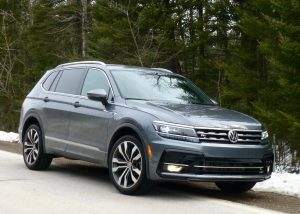
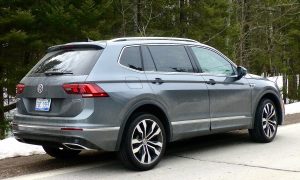
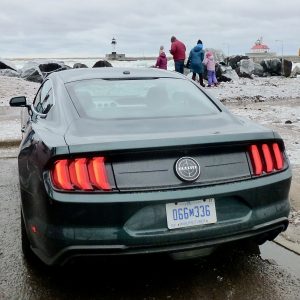
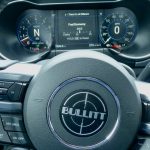

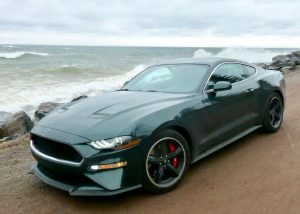
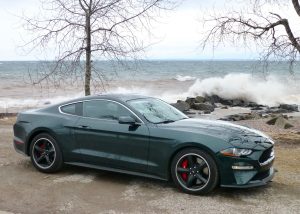

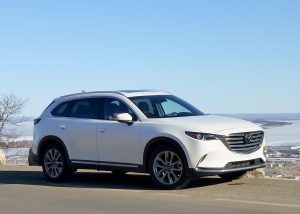
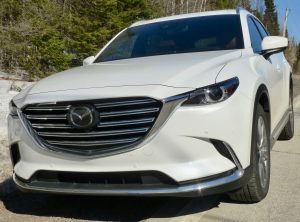
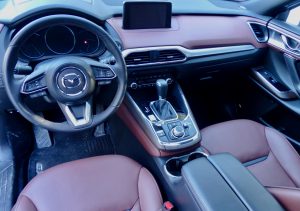

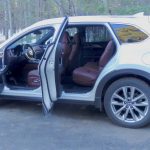
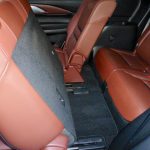
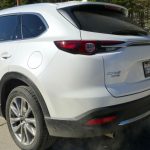
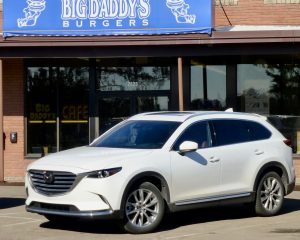
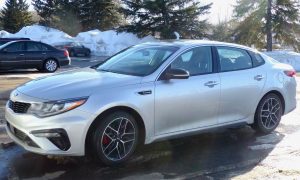
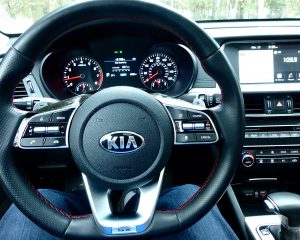


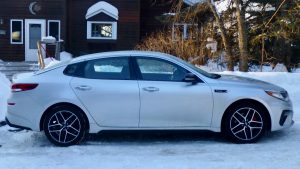
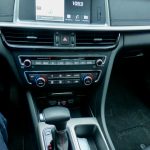

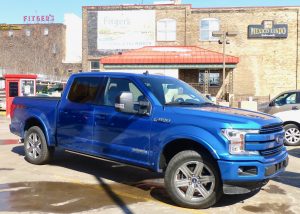
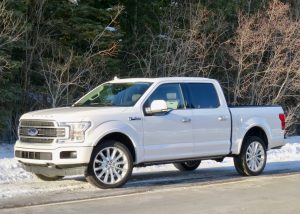
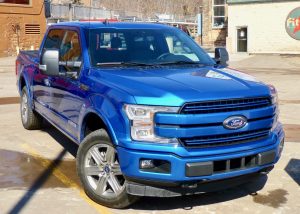
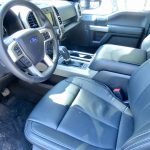
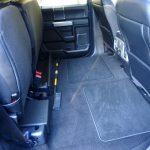
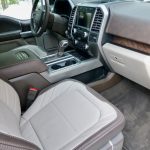
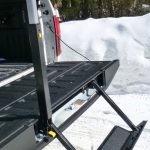
 John Gilbert is a lifetime Minnesotan and career journalist, specializing in cars and sports during and since spending 30 years at the Minneapolis Tribune, now the Star Tribune. More recently, he has continued translating the high-tech world of autos and sharing his passionate insights as a freelance writer/photographer/broadcaster. A member of the prestigious North American Car and Truck of the Year jury since 1993. John can be heard Monday-Friday from 9-11am on 610 KDAL(www.kdal610.com) on the "John Gilbert Show," and writes a column in the Duluth Reader.
John Gilbert is a lifetime Minnesotan and career journalist, specializing in cars and sports during and since spending 30 years at the Minneapolis Tribune, now the Star Tribune. More recently, he has continued translating the high-tech world of autos and sharing his passionate insights as a freelance writer/photographer/broadcaster. A member of the prestigious North American Car and Truck of the Year jury since 1993. John can be heard Monday-Friday from 9-11am on 610 KDAL(www.kdal610.com) on the "John Gilbert Show," and writes a column in the Duluth Reader.